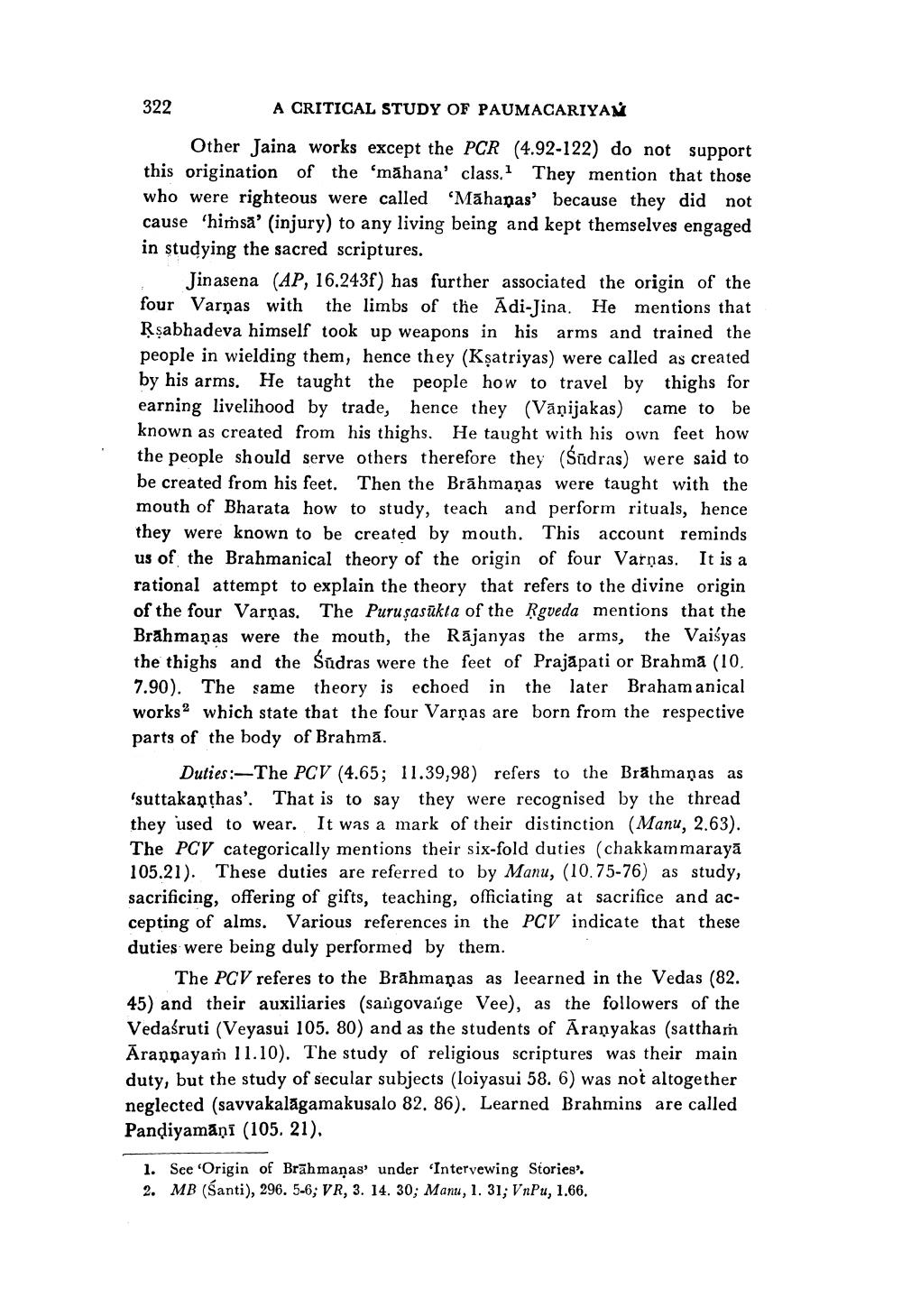________________
322
A CRITICAL STUDY OF PAUMACARIYAN
Other Jaina works except the PCR (4.92-122) do not support this origination of the 'mahana' class. They mention that those who were righteous were called "Māhanas' because they did not cause 'himsa' (injury) to any living being and kept themselves engaged in studying the sacred scriptures.
Jinasena (AP, 16.243f) has further associated the origin of the four Varnas with the limbs of the Adi-Jina. He mentions that Rşabhadeva himself took up weapons in his arms and trained the people in wielding them, hence they (Kșatriyas) were called as created by his arms. He taught the people how to travel by thighs for earning livelihood by trade, hence they (Vāņijakas) came to be known as created from his thighs. He taught with his own feet how the people should serve others therefore they (Śūdras) were said to be created from his feet. Then the Brāhmaṇas were taught with the mouth of Bharata how to study, teach and perform rituals, hence they were known to be created by mouth. This account reminds us of the Brahmanical theory of the origin of four Varnas. It is a rational attempt to explain the theory that refers to the divine origin of the four Varnas. The Puru șasūkta of the Rgveda mentions that the Brāhmaṇas were the mouth, the Rājanyas the arms, the Vaisyas the thighs and the Sūdras were the feet of Prajapati or Brahma (10. 7.90). The same theory is echoed in the later Braham anical works which state that the four Varnas are born from the respective parts of the body of Brahmā.
Duties:- The PCV (4.65; 11.39,98) refers to the Brāhmaṇas as 'suttakanthas'. That is to say they were recognised by the thread they used to wear. It was a mark of their distinction (Manu, 2.63). The PCV categorically mentions their six-fold duties (chakkam marayā 105.21). These duties are referred to by Manu, (10.75-76) as study, sacrificing, offering of gifts, teaching, officiating at sacrifice and accepting of alms. Various references in the PCV indicate that these duties were being duly performed by them.
The PCV referes to the Brāhmaṇas as leearned in the Vedas (82. 45) and their auxiliaries (sangovarge Vee), as the followers of the Vedaśruti (Veyasui 105. 80) and as the students of Aranyakas (sattham Āranpayam 11.10). The study of religious scriptures was their main duty, but the study of secular subjects (loiyasui 58. 6) was not altogether neglected (savvakalāgamakusalo 82. 86). Learned Brahmins are called Pandiyamāņi (105. 21).
1. See 'Origin of Brāhmaṇas' under 'Intervewing Stories'. 2. MB (Santi), 296. 5-6; VR, 3. 14. 30; Manu, 1. 31; VnPu, 1.66.




